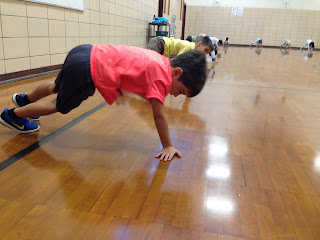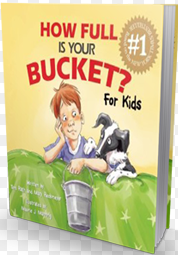In Young Fives, K, and 1st grade PE, we have started our Hula Hoop fun!
1. Warm up! Ship to shore, or around the circles warm-ups, and our stretches routine.
2. Learned/reviewed "badda-boom, badda bing". These words are a signal to stop playing with the equipment (hula hoops in this case, but we will use this phrase with bean bags, and other equipment too!), sit down, hands in your lap.
3. Each student gets a hula hoop. When they return to their seat, they work on balancing the hoop on different body parts (head, back, arm, elbow, fingers, upper thigh, and more!).
4. Exploratory movement with the hula hoops: students are encouraged to try:
- standing inside the hoop, outside, to the front, right side, left side
- jumping into and out of the hoop
- hopping in and out of the hoop (also trying their non-dominant foot)
- hopping around the outside of the hoop (also trying their non-dominant foot)
- make a balance over your hoop or part of it
- make a balance with 2 parts, 3 parts, 4 parts, 5 parts of your body touching the floor
- lay on the floor and balance your hoop on your feet and hands, rock it back and forth
- make different body shapes with your hoop on the floor (narrow, curled up, wide, stretched, etc.)
- spin the hoop: clockwise, counter clockwise, dominant hand, non dominant hand
- spin the hoop and run around it, trying to catch it before it falls to the floor
All of these exploratory movements with the hoop are suggested and demonstrated for students, and they have opportunity to try them. They have so much fun with this! And, during this fun lesson, students are working on many movement and spatial awareness concepts.
Grades 2-4 also started Hula Hoops, in their second lesson of the week (first lesson for grades 2-4 was the half or full mile pre test -- and fifth grade only has PE once per week). Grades 2-4 do the above activities more quickly than Y5, K, and 1st grade -- and they do some more advanced activities with spinning the hula hoops. A favorite is spinning the hoop at their seat, leaving it spinning and running to touch one or more walls in the gym. Then, returning to the (hopefully) still spinning hoop to scoop it up before it falls to the floor.
 |
| 4th graders: spin - touch a wall - try to catch the hoop before it falls to the floor |
Hula hoop activities adapted from Landy and Landy,
Ready to Use PE Activities for Grades K-2, 1992.


































